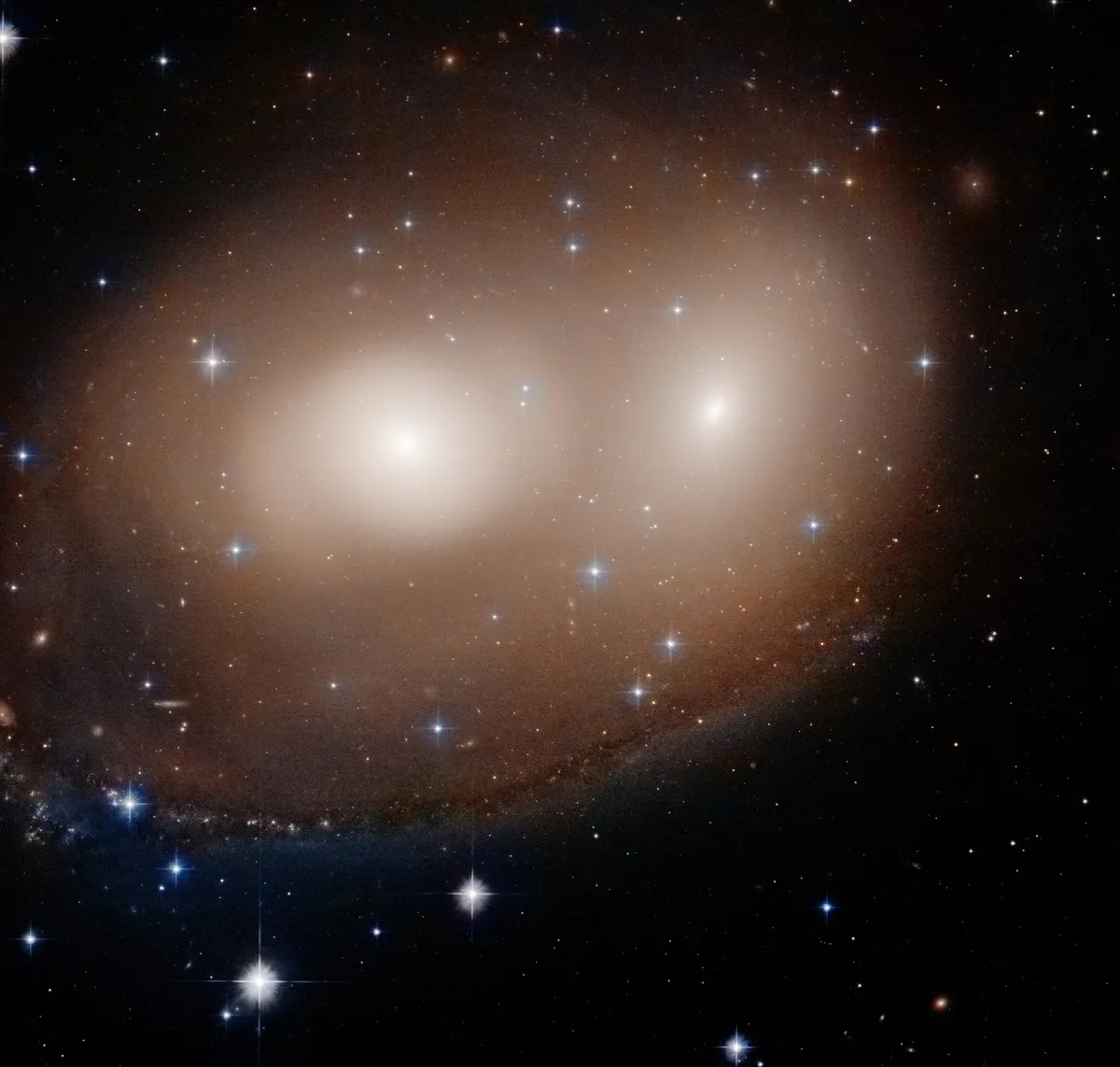
A spooky cosmic jack-o’-lantern with two glowing eyes and a crooked smile, or two galaxies colliding in the constellation Canis Major?
Clearly this new Hubble Space Telescope image shows the latter, but it’s around this time of year that NASA usually releases a brand new image of a spooky-looking cosmic object, just in time for Halloween.
The two glowing eyes are galaxies NGC 2292 and NGC 2293, which are being pulled together by gravitational forces and are in the early stages of a collision.
When galaxies collide, you might expect this would lead to stars smashing into one another, but in reality the stars are positioned so sparsely that a stellar collision is unlikely.
Instead, gravitational forces churn up interstellar dust and gas, leading to energetic bursts of star formation.
The orange glow in the image is a result of ageing red stars within the two galaxies, completing the jack-o’-lantern effect.
And the crooked smile at the bottom could be the beginning of a new galactic spiral arm, most likely formed due to the compression of interstellar gas as the galaxies began to merge.
For more Halloween-inspired space imagery, take a look at NASA’s jack-‘o-lantern Sun, Hubble’s ghostly galactic collision or Spitzer’s jack-o’-lantern nebula.
Spooky cosmic objects abound in the autumnal night sky, and organising a Halloween astronomy session can be a great way of getting kids interested in the night sky. For more on this, read our guide to Halloween astronomy.
Whatever you do this spooky season, we at BBC Sky at Night Magazine wish you clear skies and a safe weekend!
Image stats
Observatory Hubble Space Telescope
Release date 29 October 2020
Credit NASA, ESA, and W. Keel (University of Alabama)
